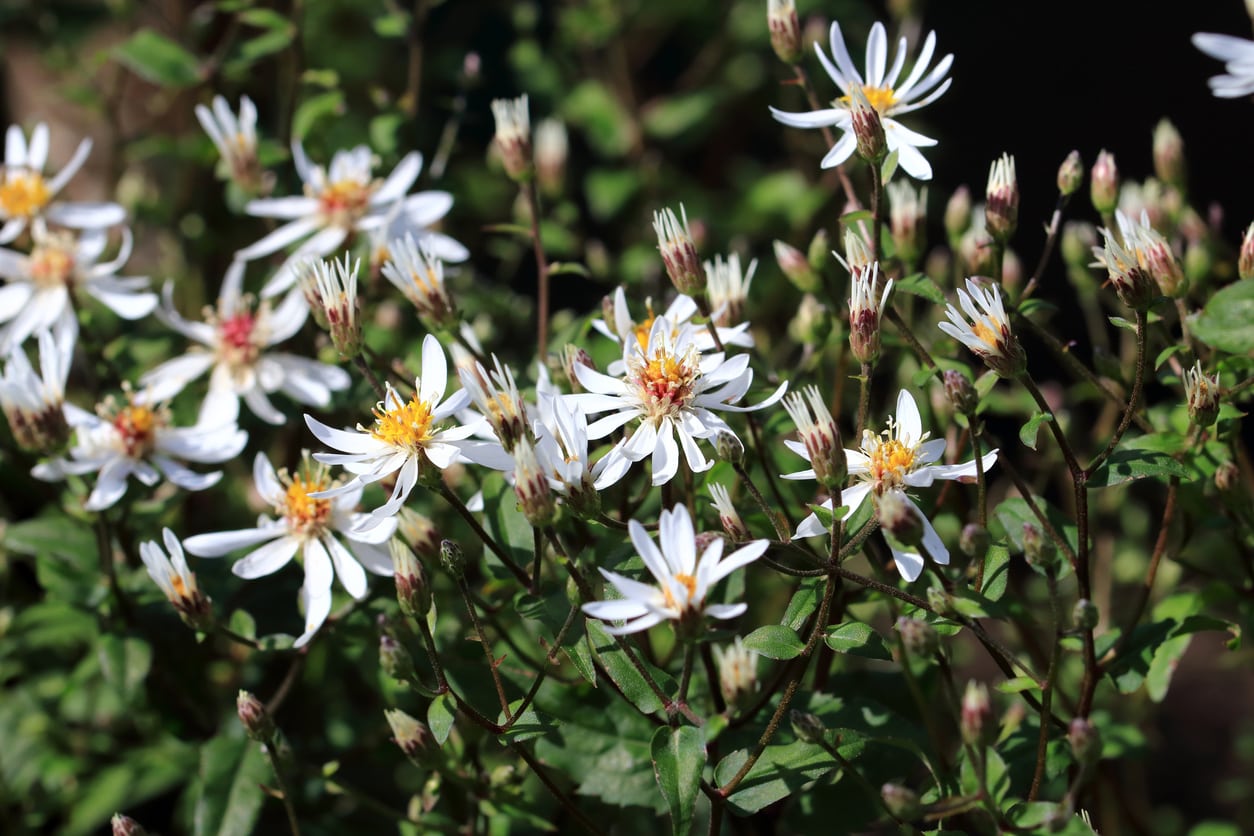White Aster Varieties – Common Asters That Are White

When fall is just around the corner and the last of the summer blossoms are fading, in march the asters, famous for their late season blossoms. Asters are hardy native perennials with daisy-like flowers prized not only for their profuse late season blooms but also as essential pollinators. Asters are available in a slew of hues, but are there asters that are white? Yes, there are an abundance of white aster flowers to be had as well. The following article contains a list of white aster varieties that make lovely additions to your garden.
Types of White Aster
If you want white aster flowers to accent other specimens in the garden or simply like asters that are white, then there are plenty to choose from. Callistephus chinensis ‘Dwarf Milady White’ is a white aster variety that, although it is a dwarf variety, doesn’t skimp on bloom size. This variety of aster is heat resistant and disease and pest free. It will bloom profusely from summer until the first hard frost. Their smaller size makes them ideal for container gardening. Callistephus ‘Tall Needle Unicorn White’ is another white aster flower that blooms late into the season. This variety of aster has large flowers with showy, needle-like petals. The plant reaches a couple of feet in height (60 cm.) and makes wonderful sturdy cut flowers. Another white aster, Callistephus ‘Tall Paeony Duchess White,’ also called peony aster, has large, chrysanthemum-like blooms. ‘Tall Pompon White’ grows to 20 inches (50 cm.) in height with large pompom blooms. This annual attracts butterflies and other pollinators. White Alpine asters (Aster alpinus var. albus) are covered in a profusion of small white daisies with sunny golden centers. This native to Canada and Alaska will thrive in the rock garden and, unlike other types of asters, blooms in the late spring to late summer. While Alpinus white asters do not bloom for an extensive period of time, they will freely self-sow if not deadheaded. Flat Top White asters (Doellingeria umbellata) are a tall, up to 7 feet (2 m.), cultivar that thrives in partial shade. A perennial, these asters bloom with daisy-like flowers in late summer through fall and can be grown in USDA zones 3-8. False aster (Boltonia asteroides) is a perennial white aster flower that also blooms late into the season. A prolific bloomer, false aster will tolerate wet to moist soils and can be planted in USDA zones 3-10. For the most part, asters are easy to grow. They are not picky about soil but do need full sun to partial shade depending upon the cultivar. Start aster seeds indoors about 6-8 weeks prior to the last frost in your area or, in regions with a longer growing season, direct sow in a prepared bed of well-drained soil amended with organic matter.
Gardening tips, videos, info and more delivered right to your inbox!
Sign up for the Gardening Know How newsletter today and receive a free copy of our e-book "How to Grow Delicious Tomatoes".

Amy Grant has been gardening for 30 years and writing for 15. A professional chef and caterer, Amy's area of expertise is culinary gardening.
-
 Zinnias On Repeat: 10 Glorious Cut-And-Come-Again Varieties For Endless Summer Bouquets
Zinnias On Repeat: 10 Glorious Cut-And-Come-Again Varieties For Endless Summer BouquetsThese zinnia varieties keep giving all summer, making them the perfect choice for dedicated cutting gardens – or just the occasional homegrown bouquet.
By Ellen Wells
-
 Create A Romantic Garden Straight Out Of Bridgerton: Regency Era Romance In Your Garden
Create A Romantic Garden Straight Out Of Bridgerton: Regency Era Romance In Your GardenTry some romantic garden ideas straight out of Bridgerton. Flowers and gardens in the Regency era were lush and charming and you can get the same look!
By Bonnie L. Grant